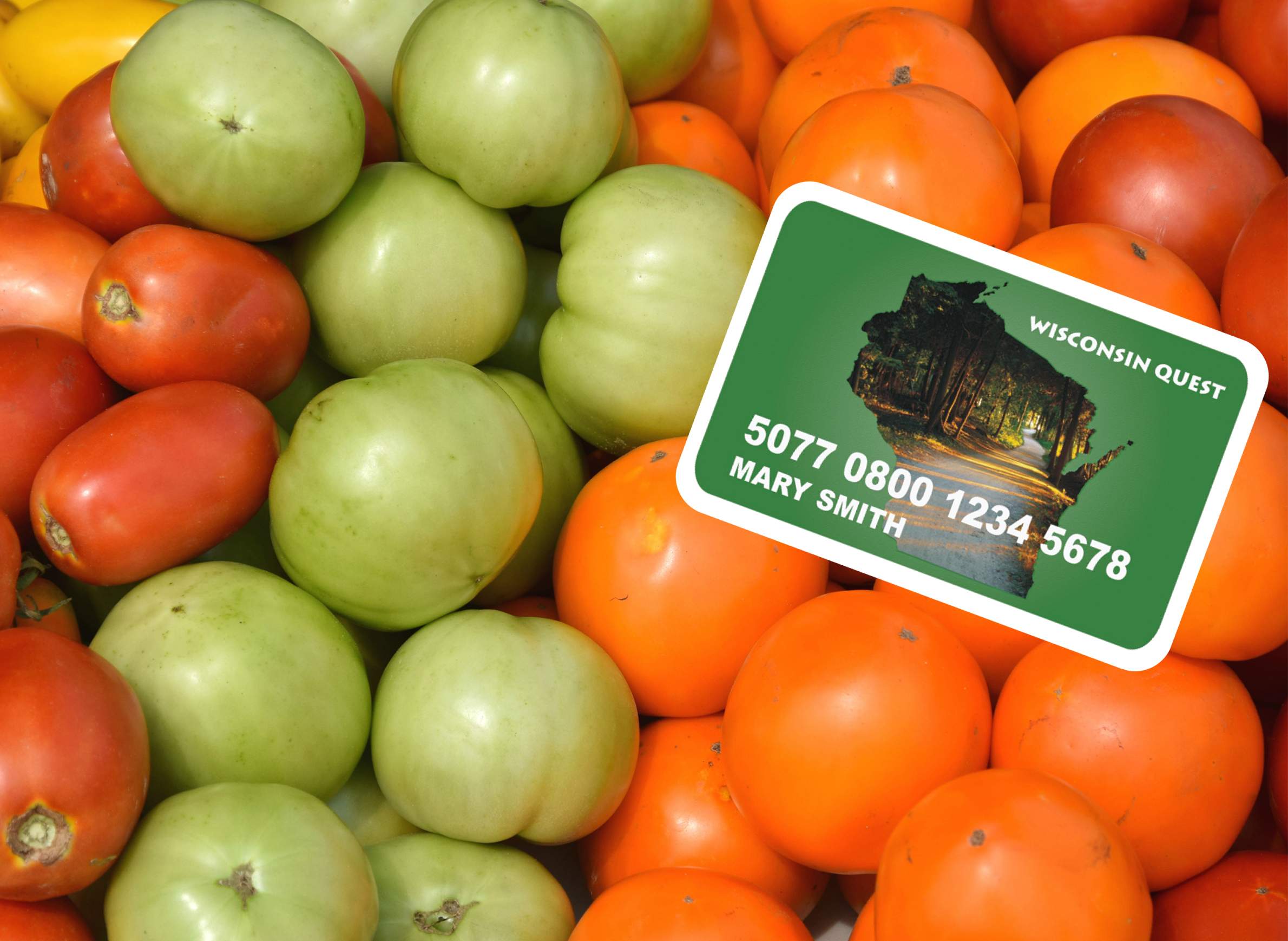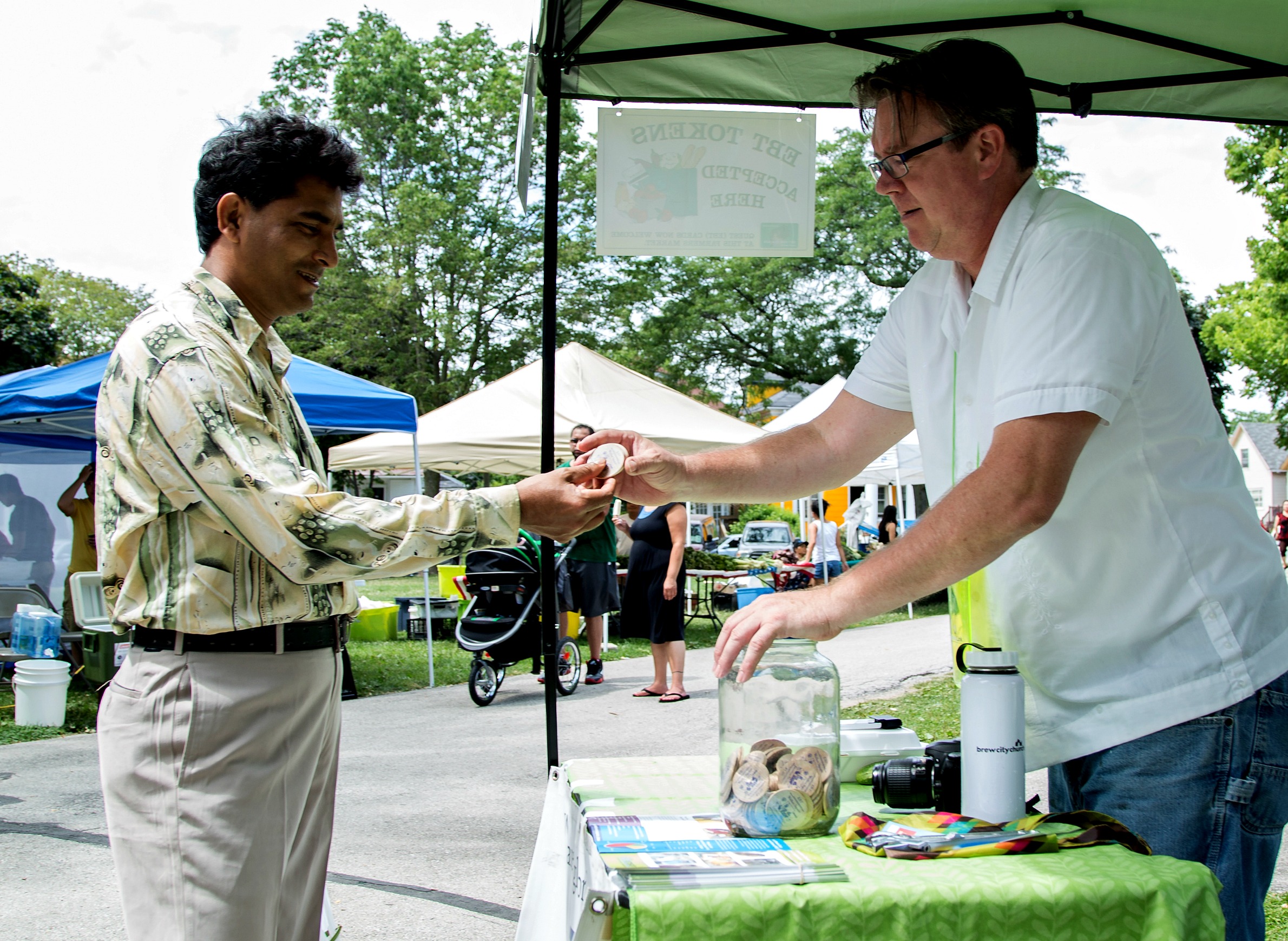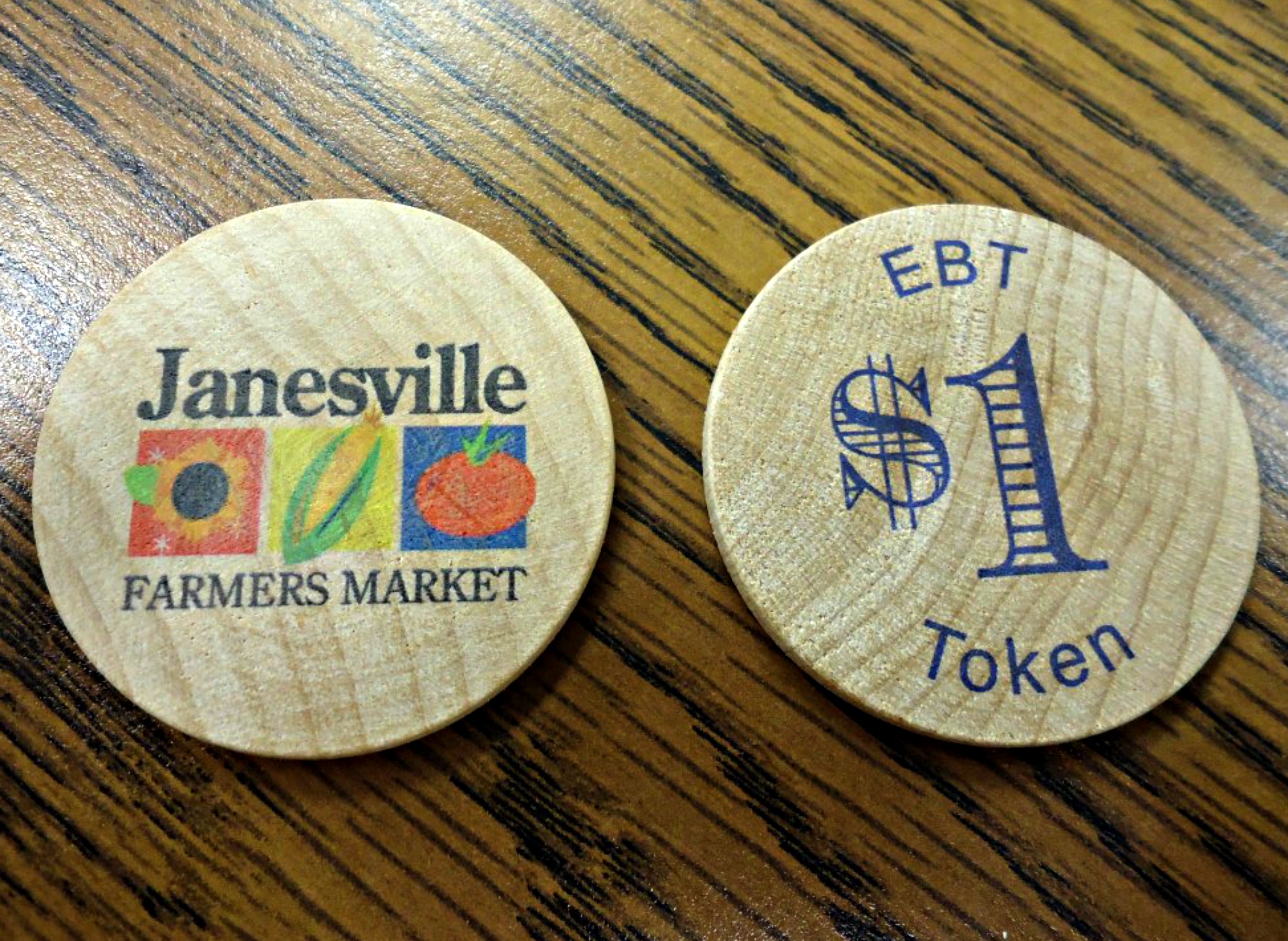
Obstacles Remain To Connecting FoodShare Users With Farmers' Markets

It's the time of year to celebrate the luscious flavors of Wisconsin summers — cherry tomatoes, sweet corn, zucchini and more. Farmers' markets are a great place to obtain affordable, seasonal and healthy produce, but not all Wisconsinites have the ability to purchase these fresh foods.
Approximately one in nine Wisconsin households is food insecure, meaning they have uncertain access to adequate safe, affordable and culturally relevant food to support an active, healthy life, according to the U..S. Department of Agriculture. On a basic level, access to healthy foods is a function of price and economic supports that bolster overall household income like the earned income tax credit and childcare subsidies. But other factors also influence this access, including availability, product placement and promotion are also important in describing a local food environment.
Good nutrition is vital for health. Diet is a known modifiable risk factor, along with smoking and physical activity, contributing to health problems such as heart disease, Type 2 diabetes, cancer and obesity. When compared to current recommendations for optimal dietary patterns to promote health, most Americans have room to improve. Income differences are a factor in nutrition, however — the diets of Americans with who make more money are healthier than low-wage earners.
Limited household earnings present challenges to achieving a healthy diet for a number of reasons. In many cases, healthier foods cost more or are not as readily accessible or available in low-income communities.
Evidence suggests that farmers' markets increase access to healthy foods, especially fruits and vegetables. Research conducted by University of Wisconsin-Extension specialists found that access to healthier foods, including farmers' markets, mitigated some of the negative impacts on health attributed to poverty in rural counties. However just the presence of a farmers' market in a community may not be sufficient to augment healthy food access for all community residents.
The Supplemental Nutrition Assistance Program, known colloquially as food stamps, is the largest food assistance program in the U.S. Administered in partnership between states and the federal government, it helps people with limited money buy the food they need for good nutrition. Benefits can be used to purchase breads and cereals, fruits and vegetables, meats, fish and poultry, dairy products, and seeds and plants to grow food. Called FoodShare in Wisconsin, the program assists approximately 13 percent of the state's population; among recipients in the state, 43 percent are under the age of 18. Some evidence suggests that certain aspects of the diets of SNAP participants improve as a result of receiving this assistance.
In recent years, the USDA has prioritized expanding healthy food access through farmers' markets to those participating in SNAP. For example, the city of Madison recently received a USDA Food Insecurity Nutritional Incentive grant to offer a dollar for dollar match for FoodShare participants; this program follows a 2013 pilot project in the city that was funded by hospitals and a health insurance company. For SNAP participants to utilize their monthly benefits at a farmers' market, an individual vendor or entire market must be authorized by the USDA to accept electronic benefits transfer cards. Once authorized, farmers' markets must acquire point-of-sale terminals or devices that are able to read the EBT cards.
The USDA offers financial resources for supporting and promoting farmers' markets as sources for healthy food. In 2014, UW-Extension's Family Living Programs received a two-year Farmers Market Promotion Program grant from the USDA to explore barriers faced by FoodShare participants to getting food at Wisconsin farmers' markets. Examples of barriers faced by SNAP participants to shopping at a farmers' market includes travel distance, convenience and prices of products available. The original motivation for the grant proposal, called "Extending Reach of Electronic Benefits Transfer (EBT) at Wisconsin Farmers Markets," was to better understand how to support and sustain ongoing growth in SNAP redemption at farmers' markets.
The number of farmers' markets authorized to accept FoodShare continues to grow, but Wisconsin has lagged behind other states in recent years. The USDA reported that in the federal fiscal year 2015 (October 2014 - September 2015), redemption of SNAP benefits at farmers' markets and through direct marketing by farmers in Wisconsin totaled $248,834 – a 46 percent increase since 2012. But despite substantial increases in total SNAP redemption over a three-year period, sales decreased slightly over the previous year. The fiscal year 2014 economic impact of SNAP redemption at farmers' markets and by direct marketing farmers in Wisconsin was $249,282.
As part of its USDA grant efforts, UW-Extension's project collected information from 272 FoodShare participants in five counties (Rock, Milwaukee, Brown, Portage and Wood) with active EBT programs at farmers' markets. The purpose was to learn directly from FoodShare participants about their experiences with farmers' markets, including barriers to shopping at these venues.
Preliminary analysis of this research found that a majority of survey respondents were not aware they could use their FoodShare benefits to shop at farmers' markets in their communities. Among those who knew of this option, word-of-mouth promotion was the primary source of awareness. Survey respondents overwhelmingly indicated that receiving extra money as a result of using FoodShare, such as the city of Madison's new incentive program, would make them more likely to shop at farmers' markets. Another motivating factor for shopping at these markets would be free activities for kids. In response to these findings, the project is testing strategies to increase social capital and community connections in support of increasing FoodShare participants' access to farmers' markets.
At a national level, the National Farmers Market Coalition serves as an information center and advocate for farmers' markets, and seeks to foster state and regional farmers' market associations. The group organizes National Farmers Market Week each August and provides information to help community groups promote access to this source of local, healthy foods.
Farmers' markets provide opportunities to teach people about nutrition and encourage healthier habits. Research shows that individuals shopping at farmers markets consume more fruits and vegetables. From a healthy food access perspective, spreading the word about the ability to use FoodShare at farmers' markets could pay off in long-term health benefits.
Amber Canto is state coordinator of the Wisconsin Nutrition Education Program and principal investigator of the Extending Reach of Electronic Benefits Transfer at Wisconsin Farmers Markets research project.




